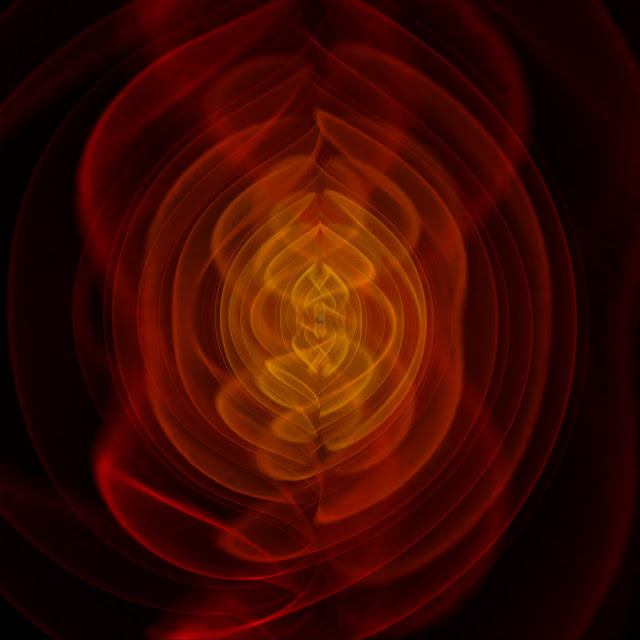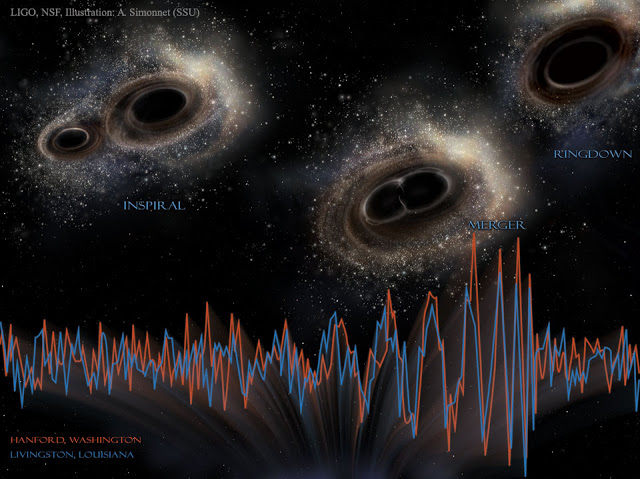

| Online: | |
| Visits: | |
| Stories: |

| Story Views | |
| Now: | |
| Last Hour: | |
| Last 24 Hours: | |
| Total: | |
Astronomers Unravelling the Puzzle of Merging Black Holes
During its first four months of taking data, Advanced LIGO (Laser Interferometer Gravitational-wave Observatory) detected gravitational waves from two mergers of pairs of black holes, GW150914 and GW151226, along with the statistically less significant black hole merger candidate LVT151012.
The first confirmed detection of gravitational waves occurred on September 14 2015 at 5.51am Eastern Daylight Time by both of the twin LIGO detectors, located in Livingston, Louisiana, and Hanford, Washington, USA. It confirmed a major prediction of Albert Einstein’s 1915 general theory of relativity and opened an unprecedented new window onto the cosmos. However, we still do not know how such pairs of merging black holes form.
A new paper, published in Nature Communications, describes the results of an investigation into the formation of gravitational-wave sources with a newly developed toolkit named COMPAS (Compact Object Mergers: Population Astrophysics and Statistics).
In order for the black holes to merge within the age of the Universe by emitting gravitational waves, they must start out very close together by astronomical standards, no more than about a fifth of the distance between the Earth and the Sun. However, massive stars, which are the progenitors of the black holes that LIGO has observed, expand to be much larger than this in the course of their evolution. The key challenge, then, is how to fit such large stars within a very small orbit. Several possible scenarios have been proposed to address this.
The Birmingham astrophysicists, joined by collaborator Professor Selma de Mink from the University of Amsterdam, have shown that all three observed events can be formed via the same formation channel: isolated binary evolution via a common-envelope phase.
In this channel, two massive progenitor stars start out at quite wide separations. The stars interact as they expand, engaging in several episodes of mass transfer. The latest of these is typically a common envelope – a very rapid, dynamically unstable mass transfer that envelops both stellar cores in a dense cloud of hydrogen gas. Ejecting this gas from the system takes energy away from the orbit. This brings the two stars sufficiently close together for gravitational-wave emission to be efficient, right at the time when they are small enough that such closeness will no longer put them into contact.
Frame from a simulation of the merger of two black holes and the resulting emission of gravitational radiation (colored fields). The outer red sheets correspond directly to the outgoing gravitational radiation that one day may be detected by gravitational-wave observatories.

Credit: NASA/C. Henze
First author Simon Stevenson, a PhD student at the University of Birmingham, explained: “The beauty of COMPAS is that it allows us to combine all of our observations and start piecing together the puzzle of how these black holes merge, sending these ripples in spacetime that we were able to observe at LIGO.”
Senior author Professor Ilya Mandel added: “This work makes it possible to pursue a kind of ‘palaeontology’ for gravitational waves. A palaeontologist, who has never seen a living dinosaur, can figure out how the dinosaur looked and lived from its skeletal remains. In a similar way, we can analyse the mergers of black holes, and use these observations to figure out how those stars interacted during their brief but intense lives.”
Source:



